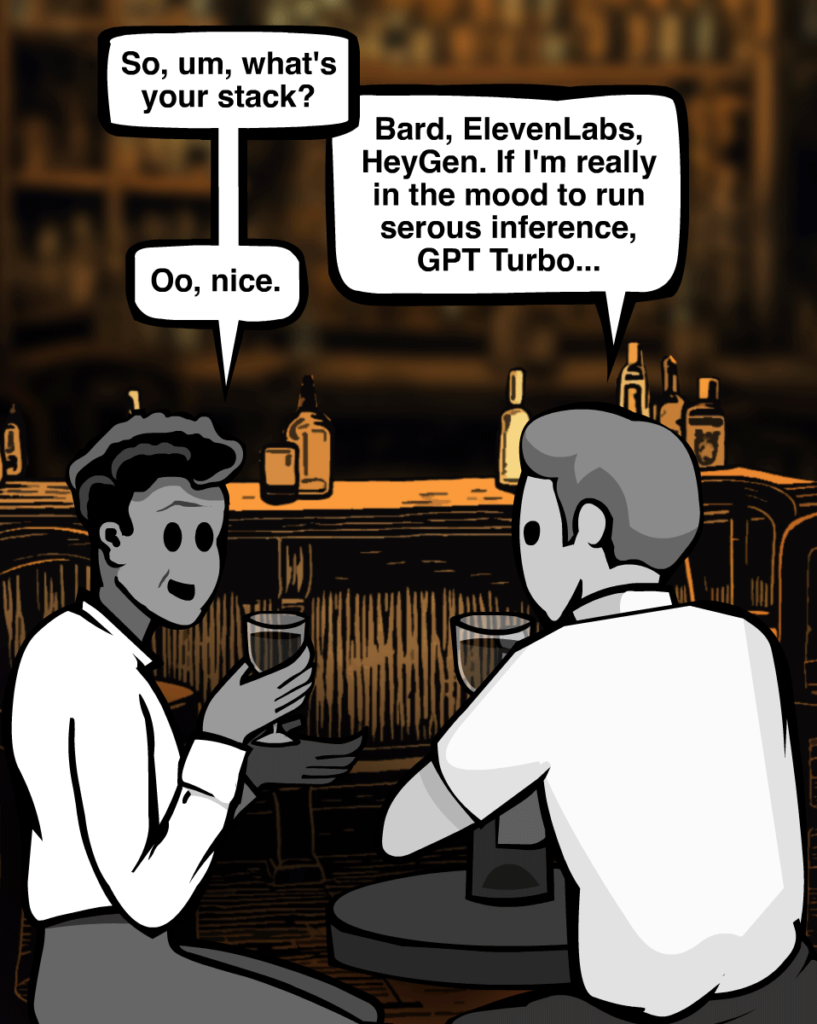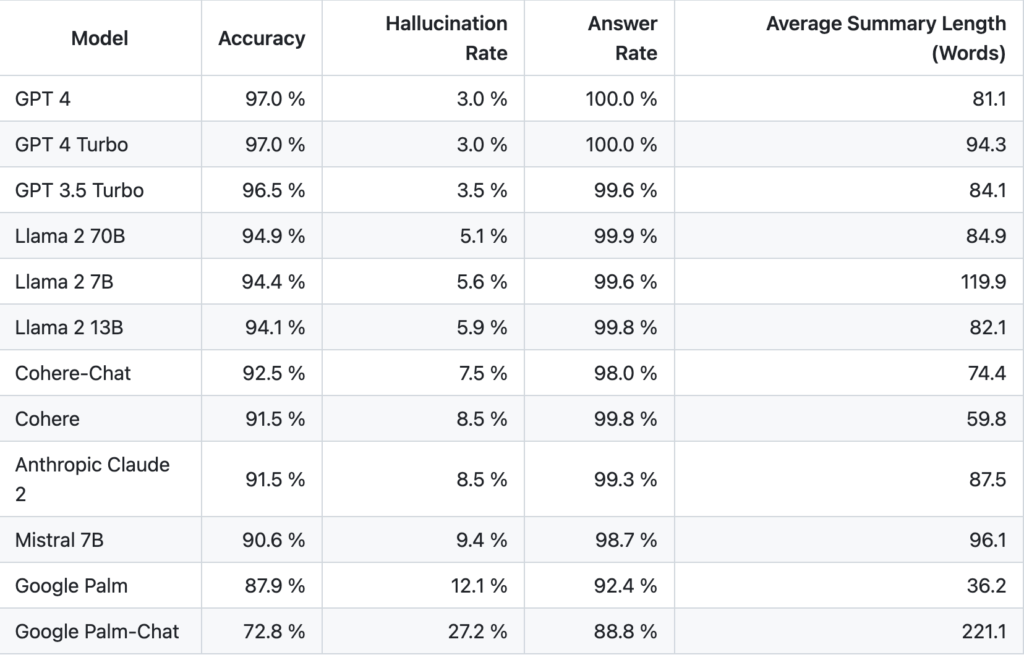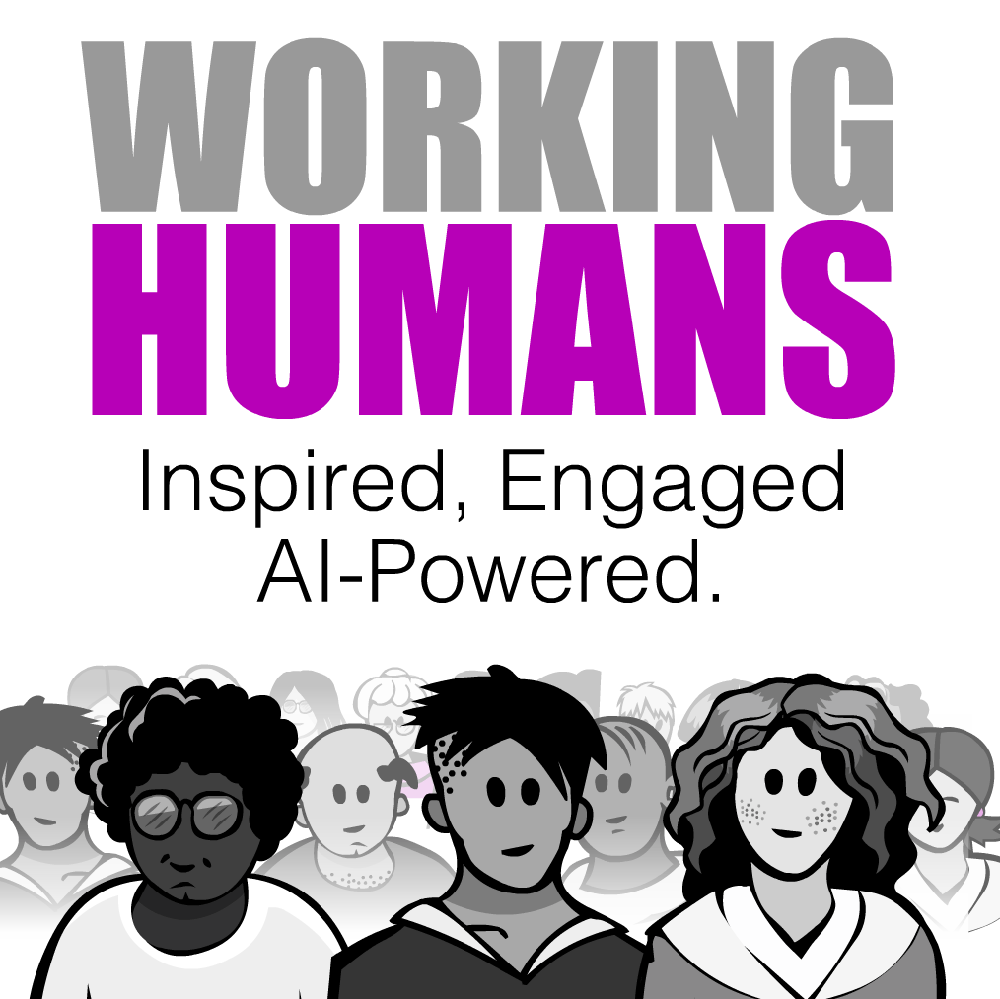AI-Powered Leadership
Fiona Passantino, late January 2024
In the AI-Powered workflow, your “stack” is the selection of AI you use together to meet all your varied needs. There’s no time to road test every single one of these and still carry on with your full-time job. And, most of them carry a monthly subscription. What tools do you need, and what can you live without?

What’s a “Stack”?
Good AI integration is all about finding and building your “stack”.
A good developer is often required to work with a set of tools and languages at the same time, flipping from one to the other to build a piece of functional software, since different tools do different things.
In the world of programming, this toolset is known as “your stack”. A commonly-used “LAMP” stack is made up of Linux, Apache, MySQL and PHP, used in combination or in parallel[i].
In the AI-Powered workflow, your “stack” is the selection of AI you use together to meet all your varied needs, filling in for the external freelancers you used to hire.
As a communicator, you may need one text generator, one video maker, one video-to-text transcription tool for a certain client and one text-to-voice bot to create that weekly podcast that no one has time to actually, physically, record.
What’s my “Stack”?
A good non-technical AI stack might look like Midjourney, Elevenlabs, Bard and Grot, just for laughs. Each model takes on a mode, for instance – text, image, video, voice – or, if you’re a Google Docs person, you might go for a multimodal option such as Bard, and spit out PowerPoints, documents, and spreadsheets all neatly residing in your Google cloud.
You might live solely in the text mode, using your own Mini GPT that you have trained yourself when you’re dealing with industry-specific topics, and Falcon for your general text generation just because you need a break from Open AI.
With new models coming online what seems like every five minutes, it’s a full-time job just keeping up with all the developments out there. It’s impossible to know which models to research, road test and assess; which of these is the least likely to hallucinate?
Hallucination Breakdown
When comparing models, it’s nice to know that researchers are on the job. We’re now deep enough into our AI evolution to be able to compare models on certain metrics, such as accuracy. Which of today’s crop of LLMs are the best and worst when it comes to hallucinations?
Unsurprisingly, Open AI’s GPT 4 versions score highest; perhaps because they have had the most time to train and upgrade their models. Google Palm Chat is at the bottom of the chart, at least for now.

Walters, W.H., Wilder, E.I. Fabrication and errors in the bibliographic citations generated by ChatGPT. Sci Rep 13, 14045 (2023)

There is no GPT Turbo, Falcon, Grot or some of the smaller players on this list. This table will likely be obsolete the moment it’s published, and will need reconfiguring once the Amazon behemoth launches its massive, 2 trillion parameter Olympus model, expected sometime in late 2023. This model is trained on data from all the books in its sprawling, international shop, double the size of the current GPT line-up[ii].
Just like everyone uses the internet in a different way, or interacts with their smartphone to meet their varied needs, every professional will use AI in her own way, both at home and at work.
Part of the challenge of AI leadership is knowing enough about how your team does its daily work to support the curation of each individual stack, one for each worker, or one for a team if there is enough task overlap. No business can afford to have premium accounts for all the multimodal models on the market, so the astute AI leader will need to make some difficult choices to have the best stack per department. This only comes to the leader who takes the time to research all the available options.
The trick is picking a model set that is varied enough to cover all the modes, tasks and will evolve with the changes to come. Ideally, the best LLMs show the best results and are likely to survive the regulatory crackdown that shuts down unauthorised data scraping or obvious copyright infringement. Each tool will need to be evaluated and road-tested, and either taken on or discarded.
A Non-Technical Stack
My own non-technical stack is based on trial and error, and use-case.
GPT-4: the premium version that’s worth the subscription costs
GPT(s): my little bots I built for laughs and fun
Dall-E: Provided with premium GPT, all the visuals many people need
Midjourney: the artist, still can’t live without it
Staffbase: for your communications, keeps us sane
Jamie: Never take notes for your meetings again
Bard: in case I need a second opinion
This makes your team’s stack maintenance a new part-time job. And we thought AI was going to take our jobs away!
Need help with your stack?
Reach out to me for advice – I have a few nice tricks up my sleeve to help guide you on your way, as well as a few “insiders’ links” I can share to get you that free trial version you need to get started.
[i] IBM (2023) “What is LAMP stack?” IBM blog. Accessed November 15, 2023. https://www.ibm.com/topics/lamp-stack#:~:text=LAMP%20stands%20for%20Linux%2C%20Apache,Linux%3A%20The%20operating%20system.
[ii] Hu (2023) “Amazon dedicates team to train ambitious AI model codenamed ‘Olympus’” Reuters. Accessed November 15, 2023 https://www.reuters.com/technology/amazon-sets-new-team-trains-ambitious-ai-model-codenamed-olympus-sources-2023-11-08/

No eyeballs to read or watch? There’s a podcast for you!
- Listen to the APPLE PODCAST
- Listen to the SPOTIFY PODCAST
Search for the “Working Humans” podcast everywhere you like to listen. Twice a month, Fiona will dive into the nitty-gritty of employee engagement, communication, company culture and how AI is changing everything about how we work now and in the future. Subscribe so you never miss an episode. Rate, review and share.

About Fiona Passantino
Fiona is an AI Integration Specialist, coming at it from the Human approach; via Culture, Engagement and Communications. She is a frequent speaker, workshop facilitator and trainer.
Fiona helps leaders and teams engage, inspire and connect; empowered through our new technologies, to bring our best selves to work. Her company is Executive Storylines. She is a speaker, facilitator, trainer, executive coach, podcaster blogger, YouTuber and the author of the Comic Books for Executives series. Her next book, “AI-Powered”, is due for release in October 2023.

